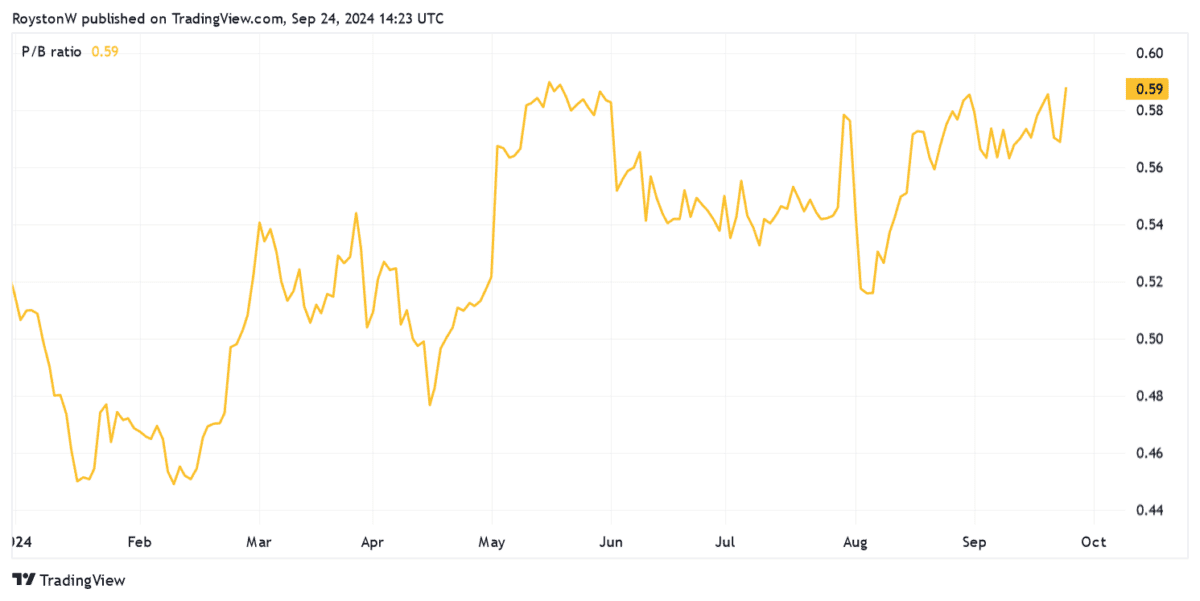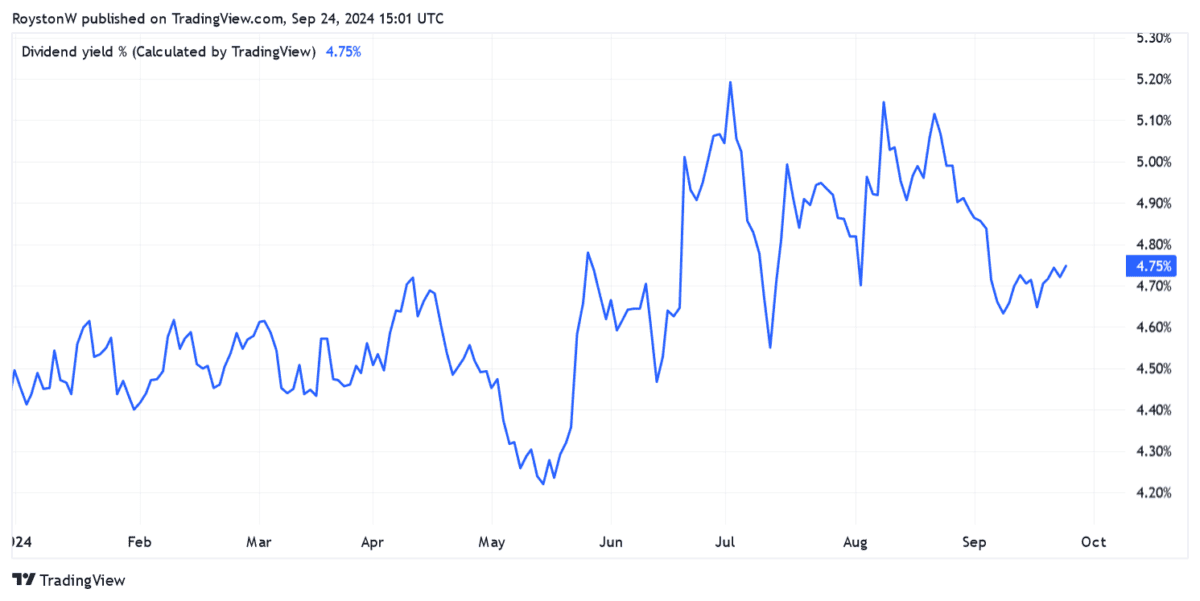Picture supply: Getty Photographs
The FTSE 100‘s enjoyed healthy gains in 2024 following years of underperformance. It’s up 7% because the flip of the 12 months as traders have woken as much as the compelling cheapness of UK shares.
There are numerous measures share pickers can use to recognise worth. The worth-to-earnings (P/E) ratio and dividend yield are a few fashionable ones. So is the price-to-book (P/B) ratio, which assesses an organization’s share worth relative to the worth of its belongings.
Primarily based on these metrics, I feel the next Footsie shares could possibly be value contemplating as they’re very low-cost.
Customary Chartered

Customary Chartered (LSE:STAN) appears low-cost throughout quite a lot of measures. Its P/B ratio of round 0.6 is nicely under the discount watermark of 1, because the chart above reveals.
The financial institution additionally affords glorious worth relative to predicted earnings. An 81% earnings bounce is predicted by Metropolis analysts in 2024. This leads to a P/E ratio of 6.5 instances.
Moreover, StanChart’s price-to-earnings progress (PEG) ratio of 0.1 can be under the worth benchmark of 1.
Like HSBC, it’s cheaper than different main Footsie banks as a consequence of its in depth publicity to China. Earnings are in peril as Asia’s largest economic system — and particularly its ailing property sector — struggles for traction.
Nevertheless, I consider StanChart’s low valuation already accounts for the challenges in China. On prime of this, I’m inspired by native lawmakers’ ongoing dedication to keep away from a serious downturn, because the Folks’s Financial institution of China’s large stimulus measures final week illustrate.
I feel Customary Chartered might show a prime long-term choose to contemplate as wealth ranges in its Asian and African markets steadily develop.
Nationwide Grid
Even following this 12 months’s dividend lower, the dividend yield on Nationwide Grid shares sits at a wholesome 4.5%. This beats the FTSE 100 common by a full share level.
For the next two years (to March 2026 and 2027), the dividend yield marches nearer to five% too, with Metropolis analysts tipping an instantaneous return to dividend progress. Yields are 4.7% and 4.8% respectively.
Nationwide Grid slashed dividends this 12 months following a rights situation to fund its infrastructure constructing programme. Additional such motion can’t be dominated out in a while, and particularly in mild of the agency’s debt-loaded stability sheet.
Nevertheless, I’m optimistic Nationwide Grid’s big inexperienced power funding will show profitable over the long run. Plans to develop its asset base by roughly 10% a 12 months by way of to 2029 might ship sustained income (and consequently dividend) progress.
United Utilities Group
United Utilities appears low-cost in the case of predicted earnings and dividends, for my part. Its ahead PEG ratio is 0.4, created by expectations of a 55% 12 months on 12 months earnings enchancment.
In the meantime, the FTSE agency’s dividend yield is an index-beating 4.8%.

Investing in water suppliers like this carries better regulatory danger than regular. Complaints over buyer expenses, leaks, and environmental impression, imply that strict new guidelines from regulator Ofwat could possibly be approaching.
Nevertheless, a extreme clamp down on the likes of United Utilities is but to materialise. And such motion isn’t tipped to come back any time quickly by trade commentators. I nonetheless suppose such water firms are engaging defensive shares to contemplate proper now.

